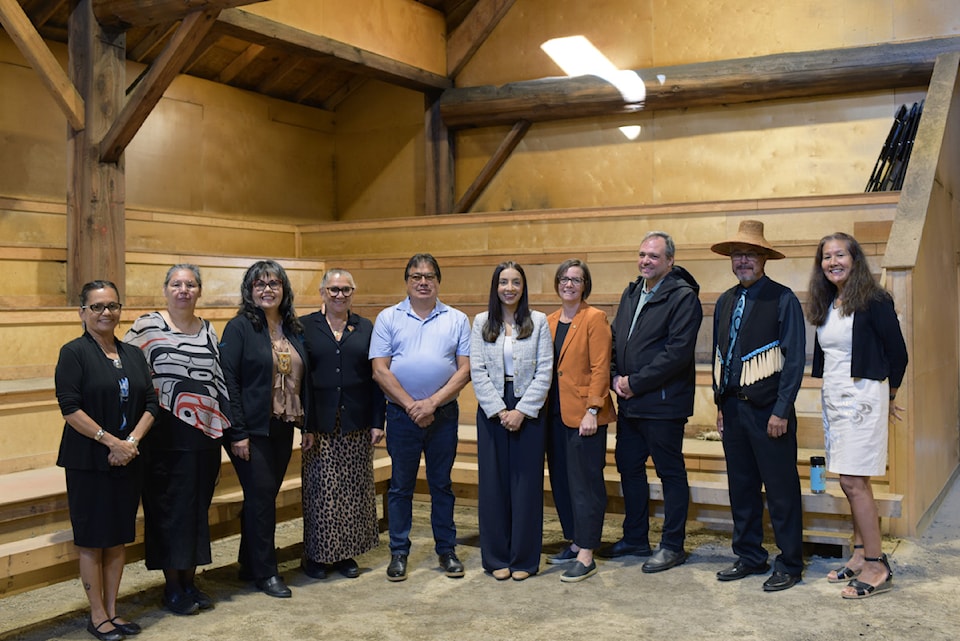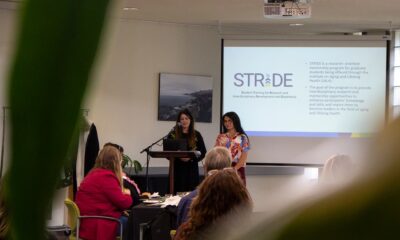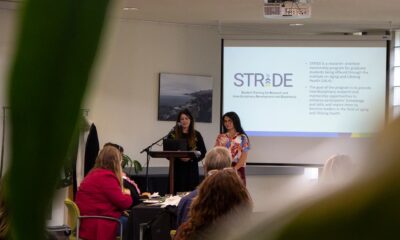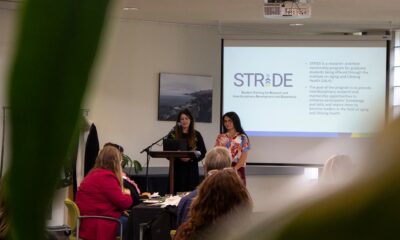Education
Indigenous Teacher Programs Launch with $5.4 Million Investment

Three new community-based teacher education programs are set to launch in British Columbia, aiming to increase the presence of First Nations teachers in K-12 classrooms. This initiative, spearheaded by Indigenous communities in collaboration with post-secondary institutions, has received a significant boost from a funding commitment of $5.4 million from the Ministry of Post-Secondary Education and Future Skills. The programs are part of the province’s StrongerBC: Future Ready action plan, designed to address a critical shortage of First Nations educators.
Community-Centric Programs Address Educational Needs
The Stz’uminus Education Society has already initiated a teacher education stream focused on the Hul’q’umi’num’ language in partnership with the University of Victoria. This program begins with a language revitalization certificate, progresses to a diploma, and ultimately offers a bachelor’s degree in Indigenous language revitalization. Seventeen learners from the Stz’uminus First Nation, located in the Ladysmith area, are participating in this inaugural cohort.
Gina-Mae Harris, Hul’q’umi’num lead for Stz’uminus, expressed her enthusiasm, stating, “I am an Indigenous Stz’uminus woman who completed a BEd. Becoming a teacher was a dream I never thought would happen. If given the opportunity to complete my BEd in my own community and in my own language, Hul’q’umi’num’, I would have done it at a younger age!”
According to the Ministry of Post-Secondary Education and Future Skills, this initiative aligns with Item 4.02 of British Columbia’s Declaration on the Rights of Indigenous Peoples Act Action Plan, which advocates for a recruitment and retention strategy aimed at Indigenous teachers in public schools.
Statistics from the 2021 Canadian census reveal that Indigenous people constitute 5.9 percent of British Columbia’s population yet represent only approximately five percent of the province’s teaching workforce. In contrast, Indigenous students make up 12 percent of the K-12 public school population, highlighting the need for greater representation in classrooms.
Expanding Educational Opportunities and Cultural Strength
The program at Stz’uminus is just one of three educational tracks launching between Fall 2025 and early 2026. The Cache Creek-area Bonaparte First Nation, in collaboration with the Nicola Valley Institute of Technology and the University of British Columbia, will offer a third-year entry program. Meanwhile, the Mowachaht-Muchalaht First Nation, also partnering with the University of Victoria, has introduced a Nuu-chah-nulth language revitalization certificate that leads to a bachelor of education.
“This program is more than a degree; it is an investment in the future of our language, culture and children,” remarked Azar Kamran, chief administrative officer of Mowachaht-Muchalaht First Nation. “By supporting our members to become teachers, we are building the capacity to teach from a place of cultural strength, ensuring that future generations of Mowachaht-Muchalaht students will learn in a way that reflects who they are and where they come from.”
Each of the three First Nations involved has received $1 million to support the delivery of these programs, which are expected to enroll a combined total of between 50 and 60 students, with graduates anticipated as early as 2028. Additionally, six other First Nations and Indigenous-led organizations have received $50,000 each to begin developing similar initiatives in partnership with post-secondary institutions.
“First Nations learners deserve to see First Nations teachers in their classrooms,” said Tyrone McNeil, president of the First Nations Education Steering Committee. He expressed optimism about ongoing support for these community-based teacher education programs from the provincial government.
As Harris highlighted, the impact of these programs extends beyond individual students. “Our language deserves to be shared to strengthen our lives. We cannot have our true culture without our language,” she concluded, emphasizing the vital link between language, culture, and education in building strong communities.
-

 Politics4 weeks ago
Politics4 weeks agoSecwepemc First Nation Seeks Aboriginal Title Over Kamloops Area
-

 World5 months ago
World5 months agoScientists Unearth Ancient Antarctic Ice to Unlock Climate Secrets
-

 Entertainment5 months ago
Entertainment5 months agoTrump and McCormick to Announce $70 Billion Energy Investments
-

 Science5 months ago
Science5 months agoFour Astronauts Return to Earth After International Space Station Mission
-

 Lifestyle5 months ago
Lifestyle5 months agoTransLink Launches Food Truck Program to Boost Revenue in Vancouver
-

 Technology3 months ago
Technology3 months agoApple Notes Enhances Functionality with Markdown Support in macOS 26
-

 Lifestyle3 months ago
Lifestyle3 months agoManitoba’s Burger Champion Shines Again Amid Dining Innovations
-

 Top Stories2 months ago
Top Stories2 months agoUrgent Update: Fatal Crash on Highway 99 Claims Life of Pitt Meadows Man
-

 Politics4 months ago
Politics4 months agoUkrainian Tennis Star Elina Svitolina Faces Death Threats Online
-

 Sports5 months ago
Sports5 months agoSearch Underway for Missing Hunter Amid Hokkaido Bear Emergency
-

 Politics5 months ago
Politics5 months agoCarney Engages First Nations Leaders at Development Law Summit
-

 Technology5 months ago
Technology5 months agoFrosthaven Launches Early Access on July 31, 2025





















